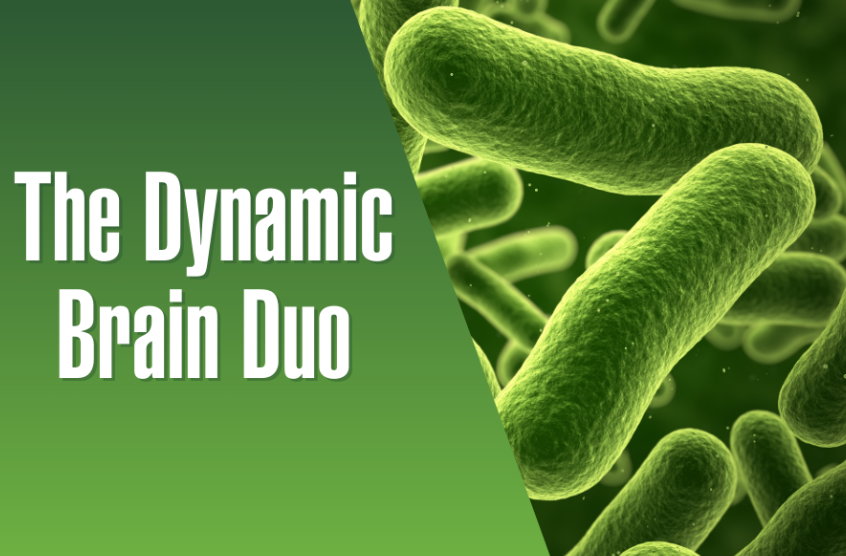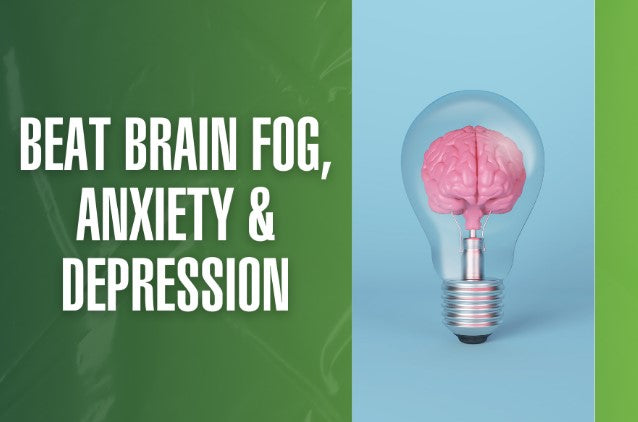
I’ve got grains on the brain today!
There’s so much talk about getting whole grains or “ancient grains” into your diet, but I want to fill you in on why you should do the opposite.
There are a few important reasons to avoid grains in favor of other foods like vegetables.
First off, did you know that ALL grains have the ability to become contaminated with fungal mycotoxins, which are toxic forms of fungus that have long-term, serious health effects including immune deficiency and certain cancers?
It’s true – the World Health Organization recently released a fact sheet about mycotoxins that says they “appear in the food chain as a result of mold infection of crops” of what they call cereals, also known as:
- Corn
- Wheat
- Rice
- Peanuts
- Soybeans
- Sunflower seeds
- Certain spices
- Tree nuts
- The milk of cows fed those grains
The second reason grains should be avoided is what I call the Grain Brain Drain!
Here’s what you need to know about this problem. We’ve talked before about how omega-3 fatty acids are anti-inflammatory, while omega-6 fats are inflammatory, right?
Which organs in the body are MOST affected by an inflammatory diet? We know from extensive research that the answer is the heart and the brain. That’s why there are links between omega-6 fat consumption and both heart disease and Alzheimer’s.
Well, guess which type of fatty acids can be found in grains. You guessed it… inflammatory fats! So by eating a diet based in grains – even “whole” or “ancient” grains – you are FUELING inflammation, especially in your brain and heart.
The brain is made up of 60% fat. That may explain why omega-3 supplementation from prenatal on through all of life is associated with lower risk of ADD/ADHD, Alzheimer’s, depression, and more. The opposite is also true – too much inflammatory fat puts you at greater risk of disease.

Scary, huh?
Truthfully, if you want to live your healthiest life, your best bet is to stop eating ALL grains!
Let’s run through the different types of grains and why they are problematic, with a special emphasis on 2 of the WORST grains…
Farro, kamut, barley, and spelt – These grains come from wheat and each contain gluten. Think of them more as pasta than ancient grains.
Rye and millet – These grains are gluten free, but they are also very acidic. Rye has a pH of about 4.3, which makes it more acidic than coffee.
Amaranth, buckwheat, and oats – These grains are mildly alkaline and gluten free. If you are going to eat any grains, these are the ones to choose. But eat them in moderation due to the possibility of mycotoxins and read ingredients to make sure they are gluten free, especially with oats.
Wheat
Here’s a refresher on why you should avoid wheat at all costs…
The portion of the wheat that causes problems is gluten, a protein that causes symptoms like:
- Bloating
- Poor digestion
- Headaches
- Lethargy/ lack of energy
- Depression
- Weight gain

The problem is that most people don’t think those symptoms are caused by the food they’ve been eating their entire lives. They just think, “There must be something wrong with me,” or “This is just the way it is for me.”
Let me be clear: those are not symptoms you have to live with or get used to. Gluten makes up a HUGE portion of the total acid load in your body if you are consuming any.
What happens from there is called Leaky Gut Syndrome. Gluten is so acidic that it creates openings, like craters, in your gut. Because of these perforations in the intestinal wall, the body’s army can’t stop acid from getting into the bloodstream.
If you regularly experience diarrhea, gas, or bloating, you probably already have a leaky gut.
Because gluten sticks like glue to your intestines, you’re likely to feel bloated for days at a time after consuming it. So I recommend you try removing it completely from your diet and see how you feel after about a week.
Rice
Most people think of rice, especially brown rice, as better for you than gluten.
Here’s what you need to know about rice. It contains dangerous levels of arsenic!
The Environmental Protection Agency says that there is no “safe” level of exposure to inorganic arsenic, the type found in rice.
You might be wondering… Does arsenic transfer to the body of the person who ate the rice? It does. Consumer Reports revealed that people who ate a diet that included rice were 44% more likely to have arsenic levels in their blood, and it disproportionally affected certain ethnic groups including Latino and Asian people.
Another question that people often ask is… The Japanese culture consumes a lot of brown rice – Why are Japanese people so healthy if rice is bad? That’s a great question. The problem is not the rice itself. The problem comes from the toxins in the soil and water that the rice absorbs.

90% of the rice that we eat here in the United States is grown here, mostly in the lower Mississippi delta – Arkansas, Louisiana, Mississippi, Missouri, and Texas. That region has a long history of producing cotton, a crop that was heavily treated with arsenic pesticides. Even today, some arsenic herbicides are still used.
Water that floods the rice fields can be contaminated with even decades-old arsenic. Not only that, but in some places, chickens are fed drugs containing arsenic and their waste is used to fertilize fields (even on organic farms) growing crops like rice.
The Only “Grain” I Eat: Quinoa!
Now, after reading about why all grains are problematic, you might wonder why I recommend quinoa so often. Good question.
Quinoa isn’t actually a grain. It’s a seed! So it’s not subject to fungal mycotoxins from groundwater. It’s gluten free. It’s alkaline. And it’s low in inflammatory fats and high in anti-inflammatory fats.
That’s great news if you’re looking for a healthy alternative to grains. Quinoa should still be eaten in moderation, but we eat it a couple of times a week in my house.
Here are a few of my favorite quinoa recipes from our blog:
Combat the risk off too many inflammatory fats by getting your daily dose of anti-inflammatory omega-3 fats.
An omega-3 supplement is the best way to combat all of the omega-6 fats hidden in your diet in foods like grains, bread, oils – grapeseed oil is the worst percentage of omega-6 of any food! – processed foods, sesame seeds, and pumpkin seeds.

Our Alkamind Daily Omega-3 is the best quality supplement on the planet. It’s the ONLY one with the ideal 2:1 ratio of EPA to DHA in a highly concentrated form. So you can take less and get more benefit from it. Plus it’s heavy metal free and guaranteed for potency and freshness, so no fishy taste.
Subscribe & Save 15% today!
GET OFF YOUR ACID!
Dr. Daryl
 Skip to content
Skip to content





